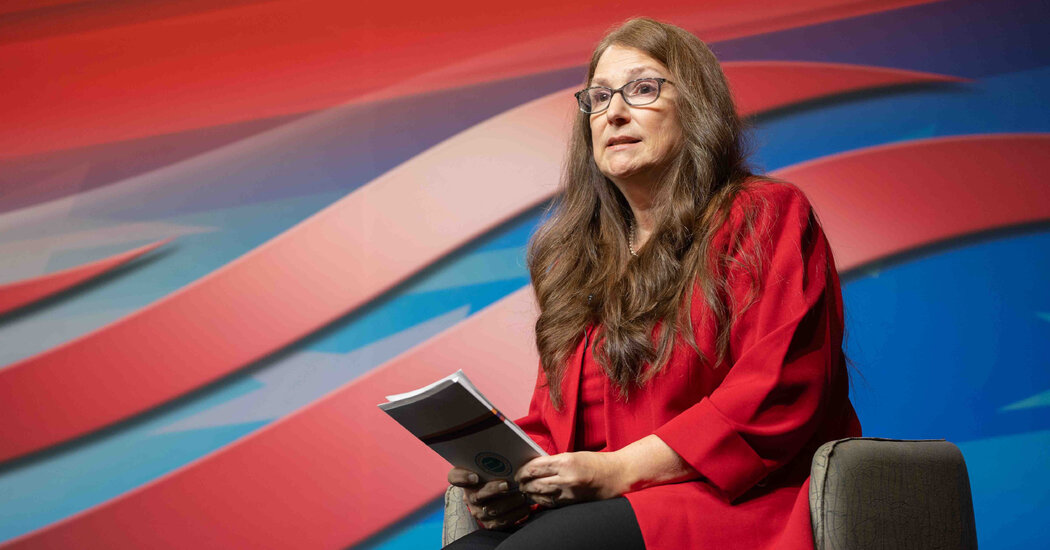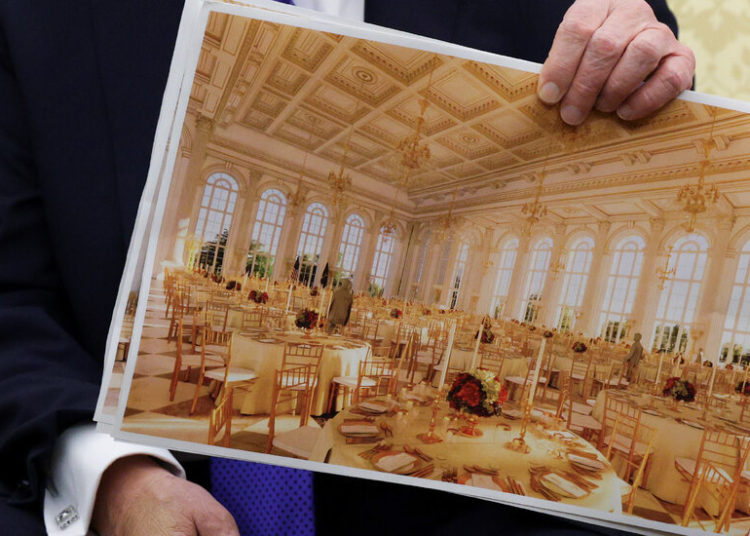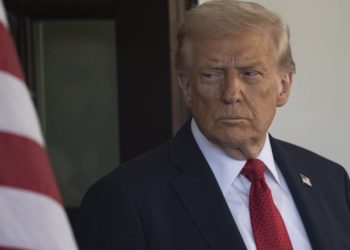You could be forgiven for thinking that the election deniers of 2020, who claimed vocally and spuriously that fraud had cost President Trump re-election that year, had faded into obscurity after he won in 2024, once their raison d’être was no more.
But now that Trump is back in the White House, he has made some of them more powerful than ever.
Trump has appointed election deniers to high-level positions in the government, giving the same people who worked to destabilize and discredit election results after 2020 the power to potentially interfere with future contests. Their presence there, my colleagues Alexandra Berzon and Nick Corasaniti reported this week, has raised fears among state and local officials that he aims to seize more authority over elections before next year’s midterms.
This is an important story, one that gets at how we vote, who calls the shots, and the extent to which that is changing under Trump. And it’s happening as the administration takes other aggressive steps to exert more sway over elections. I asked Alexandra and Nick, who have covered election deniers for years, to guide us through their findings — and to explain why state and local election officials are feeling so uneasy right now.
You wrote that the president is using the powers of the government to upend the electoral system. How?
Nick: This is happening on a few different levels. First, existing federal programs that protect election infrastructure and security have been slashed, both by the Department of Government Efficiency’s work force cuts, as well as other funding and staffing cuts. That set off alarm bells for local election officials, who worried they were losing longtime federal partners who have helped them to secure American elections.
Then, Trump issued an executive order that would have given the executive branch — which has no constitutional authority over elections — an unprecedented role in running elections. That has gotten tied up in court, but it shows that he wanted to use the government’s power to change the electoral system.
And, at the same time, we are seeing some of the people who worked to overturn the 2020 election taking formal roles in the federal government.
Introduce us to one person who is part of this effort.
Alexandra: Heather Honey. She was a corporate investigator without elections experience who, after the 2020 election, joined forces with Cleta Mitchell, an attorney who has worked for Trump.
She has a knack for creating complicated and sticky theories about election systems and repeating them even after elections professionals explain their fallacies, and she played a central role in the much-discredited Maricopa County audit that Republicans in Arizona did after 2020.
Now she’s the deputy assistant secretary for Election Integrity at the Department of Homeland Security. In a recent call with nearly all of the nation’s secretaries of state, she used the rhetoric of election deniers, alarming some of the officials who had hoped to hear how federal officials are working to safeguard the vote.
What do officials like Honey have the power to do?
Alexandra: State and local governments largely govern how they run their own elections, so the role of federal officials like Honey is limited by design. One idea that has been floated by right-wing election activists, though, is the notion of declaring a “national emergency” related to elections and trying to seize more federal control that way. Before she was officially in government, Honey suggested on an organizing call with activists that such a move could happen, and that it might be based on reopening an investigation into the 2020 election. Mitchell has raised it publicly as well, although this hasn’t been attempted before, and legal experts are skeptical that the president has the authority for such a maneuver.
In fact we’ve also learned that a lawyer named Kurt Olsen, who has long been a major part of the election denial movement and is very close to Mike Lindell, is now working at the White House on a special project to investigate the 2020 election. (This is a development first reported by The Wall Street Journal.)
What other new steps is the federal government taking when it comes to election administration?
Nick: Everything the federal government is doing to elections is important to pay attention to, because so much of it just hasn’t happened before. That includes an effort by the Department of Justice to build a national voter roll, which is frightening election officials. They worry it could be replete with errors, and that it could be used for political purposes or weaponized either against individual voters or whole states.
Ever since the Voting Rights Act was passed, the Justice Department has largely acted as the biggest civil rights law firm in the country, often protecting voting rights. Now, they’re focused largely on hunting for fraud.
How could this shape the 2026 midterms, and beyond?
Nick: I don’t think we know yet. Right now, there is a lot of uncertainty when it comes to the dependability of the federal government to make sure that our elections are safe, secure and fair. The injection of these high ranking officials who had previously spread false information — or even actively worked to overturn the 2020 election — it just creates more uncertainty and more instability.
We don’t know yet how that might manifest, but it’s certainly a departure from what was a pretty apolitical and very results oriented partnership between the local officials who run elections, and the federal officials who they’ve long relied on for help.
Our conversation was edited for clarity and condensed.
BY THE NUMBERS
3 percent
That’s how much inflation has risen since this time last year, according to data released by the Bureau of Labor Statistics on Friday. It’s a slight acceleration, coming as tariffs raise prices on a range of consumer goods.
The data came late this month because of the government shutdown, which is on its 24th day. Karoline Leavitt, the White House press secretary, warned that the shutdown would probably cancel the October inflation report altogether.
The Moment
Through the White House columns
You’re likely familiar with the images of the East Wing demolition that rocketed around the globe this week, a symbol, David Sanger wrote today, of President Trump’s brazen approach to power and the permanence of the changes he is bringing to Washington.
But here is a view of the project that I hadn’t seen, from The New York Times’ Doug Mills, who has photographed the East Wing often over the years. White House officials have fenced off the demolition, so Doug brought a six-foot ladder out to the White House driveway on Thursday morning to give him a better look.
“It looked like smoke up there,” Doug said, “there was so much dust.”
into the replies
What you saw in the pictures of the East Wing
After I wrote about the demolition of the East Wing on Wednesday, my inbox exploded. Readers had a lot of thoughts and questions about the end of this 123-year era. Here’s a little bit of what I heard.
Who pays? Many of you wanted to know more about who, exactly, is paying for a project that the White House insists will be privately funded — a promise that comes with little built-in transparency. The White House has released a list of donors that includes major corporations like Apple, Amazon and Google, as well as cryptocurrency interests like the companies Ripple and Coinbase, plus individual contributors like Cameron and Tyler Winklevoss. Other donors are billionaires who stand to benefit from close ties to the administration.
What was preserved? For decades, the East Wing was home to the offices of the first lady and was a social hub for official Washington. It witnessed a lot of history. Jim Hirst, of Minneapolis, asked:
“Was there nothing salvageable from the structure that could have been saved for collectors or historians? I would think doors, windows, and moldings at least could have been saved rather than destroyed as indicated in the pictures provided.”
I called a White House official this morning to get Jim an answer, and I was told that, beginning in early September, officials undertook a “preservation stage” in which they removed historically valuable structural items, which could include wood paneling or shelves, and even trees and plants which went to nurseries for safekeeping. I didn’t learn too much in the way of specifics — although I was told that some of the dirt from the White House has been sent to the East Potomac Golf Links to improve the grounds there.
A note of praise: Karen Wires wrote in to say that she likes the project, which, to her is a symbol of President Trump getting things done.
“He actually knows what he is doing, knows how to solve what we were told were unsolvable problems, and is able to articulate what he is doing right out in the open.”
“I hope to take my family to the White House at Christmas and, if we are lucky, maybe the new ballroom will be on the tour,” Karen added.
Taylor Robinson and Ama Sarpomaa contributed reporting.
Jess Bidgood is a managing correspondent for The Times and writes the On Politics newsletter, a guide to how President Trump is changing Washington, the country and its politics.
Nick Corasaniti is a Times reporter covering national politics, with a focus on voting and elections.
Alexandra Berzon is an investigative reporter covering American politics and elections for The Times.
The post Trump Is Putting Election Deniers in Charge of Elections appeared first on New York Times.




